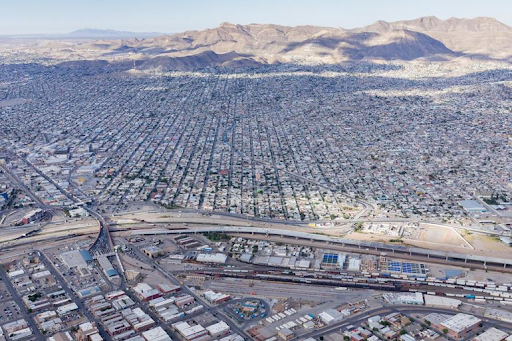The journey from El Paso, Texas, to Ciudad Juárez, Mexico, is more than just a physical crossing; it is a passage through cultures, histories, and shared experiences. These two cities, separated by a river and a border, are intricately connected, each contributing to the rich tapestry of life that defines this unique region.
A Tale of Two Cities
With its sprawling desert landscapes and vibrant arts scene, El Paso is often characterized by its distinct American identity. Conversely, Ciudad Juárez, known for its bustling markets and dynamic street life, embodies a lively Mexican spirit. The Rio Grande, often a symbol of division, bridges these two worlds, fostering an intermingling of traditions, languages, and flavors.
Historically, the area has been a crossroads of cultures. Long before the border was established, the indigenous peoples of the region thrived, cultivating a rich heritage. The arrival of Spanish explorers in the 16th century introduced new customs and beliefs, creating a blend of cultures that still exists today. This shared history is palpable as one moves from one city to the other.
The Physical Crossing
The actual crossing from El Paso to Ciudad Juarez is straightforward, typically done via the Paso del Norte International Bridge. Travelers often encounter a vibrant mix of pedestrians, cyclists, and vehicles, all sharing the same goal: to explore what lies on the other side. For many, crossing the border can be both exhilarating and nerve-wracking, with the anticipation of new experiences tinged with the uncertainty of navigating a different country.
As one approaches the bridge, the bustling atmosphere becomes palpable. Vendors sell food, trinkets, and souvenirs, and the sound of laughter and conversation fills the air. Once on the bridge, the Rio Grande flows beneath, a reminder of the geographical and cultural significance of this boundary. The panoramic views offer a stunning contrast: on one side, El Paso’s modern skyline; on the other, the vibrant colors and life of Ciudad Juárez.
Arrival in Ciudad Juárez
Upon entering Ciudad Juárez, one is immediately enveloped by the energy of the city. The streets are alive with the sounds of mariachi music, the aroma of street tacos, and the sight of locals engaging in daily activities. The city, with its rich cultural landscape, invites exploration.
The historic downtown area is a must-visit, with its colonial architecture, plazas, and bustling markets. The Mercado Juárez, in particular, is a treasure trove of local crafts, artisan goods, and traditional foods. Here, one can sample authentic Mexican dishes, from tamales to pozole, or shop for handmade souvenirs that reflect the region’s artistic spirit.
Art and culture thrive in Ciudad Juárez, evident in its numerous galleries and public murals. The city has become a canvas for artists, many of whom use their work to express social and political messages. Walking through the streets, one can discover murals that tell stories of resilience, hope, and the shared experiences of the people living in this borderland.
Cultural Exchange
The relationship between El Paso and Ciudad Juárez is characterized by a constant exchange of culture. Many residents of El Paso have familial ties in Juárez, and vice versa, leading to a fluid movement between the two cities. This cross-pollination enriches both places, fostering a sense of community that transcends borders.
Events such as the annual “Cielo del Norte” festival celebrate this cultural unity, featuring music, dance, and art from both sides. Such gatherings highlight the shared heritage and the collaborative spirit of the border region, showcasing the beauty that emerges when cultures intersect.
Language is another element that embodies this connection. In both cities, Spanglish—a blend of Spanish and English—can be heard in everyday conversations. This linguistic fusion reflects the realities of living in a borderland where two languages coexist, shaping the identity of the people.
Challenges and Resilience
Despite the vibrant culture and shared history, the border region faces significant challenges. Issues related to immigration, safety, and economic disparity often dominate the narrative surrounding Ciudad Juárez, which has experienced violence and instability over the years. Yet, amidst these challenges, the resilience of its people shines through.
Community organizations and grassroots movements have emerged, working tirelessly to improve conditions and foster positive change. Initiatives aimed at promoting education, art, and economic development are a testament to the spirit of the residents who refuse to let adversity define them. These efforts not only uplift the local community but also strengthen the ties between El Paso and Ciudad Juárez.
Bridging the Divide
Travelers journeying from El Paso to Ciudad Juárez often leave with a deeper understanding of the complexities and beauty of the border experience. It is a journey that challenges preconceived notions and encourages a broader perspective. Whether it’s through engaging with local artists, savoring traditional meals, or simply conversing with residents, each encounter adds layers to the narrative of these two cities.
As the world becomes increasingly interconnected, the significance of places like El Paso and Ciudad Juárez cannot be overstated. They serve as reminders of the shared humanity that exists beyond borders, urging us to celebrate diversity while acknowledging the challenges that come with it.
Conclusion
Crossing from El Paso to Ciudad Juárez is more than just a geographical transition; it is a journey through history, culture, and community. This borderland is a living testament to the power of connection, resilience, and the vibrant tapestry of life that emerges when two worlds meet. As travelers embark on this journey, they discover not just a new place, but a deeper appreciation for the rich narratives that define the El Paso-Ciudad Juárez region—a reminder that borders can unite as much as they divide.






